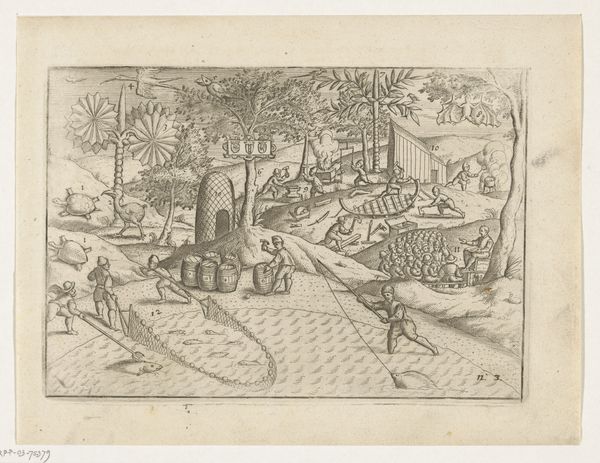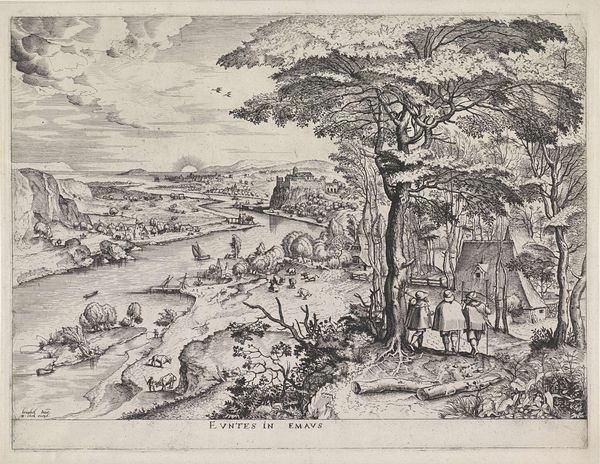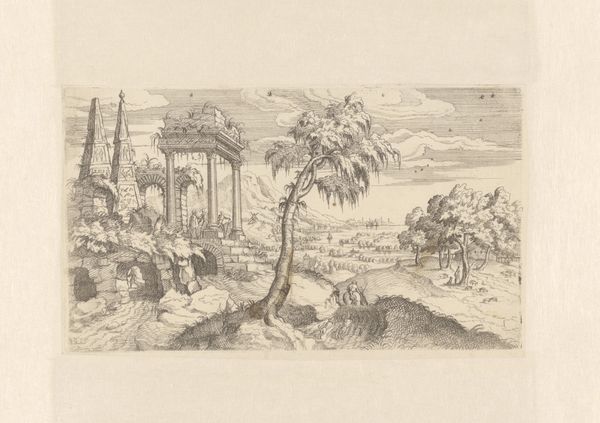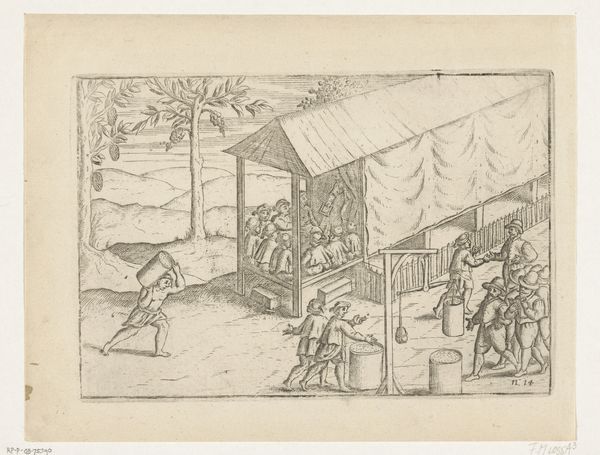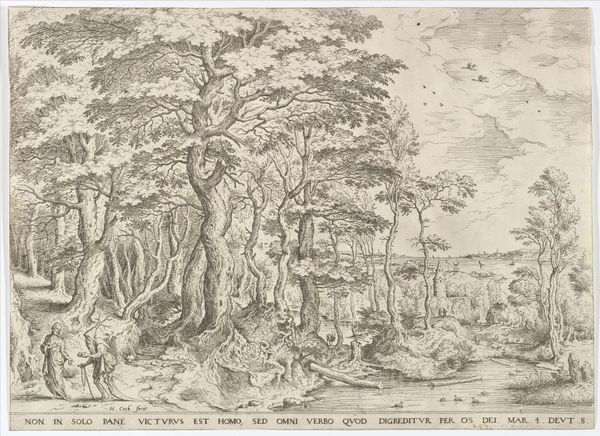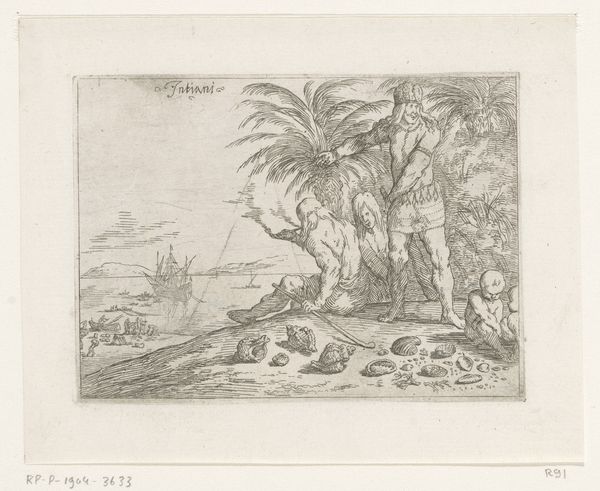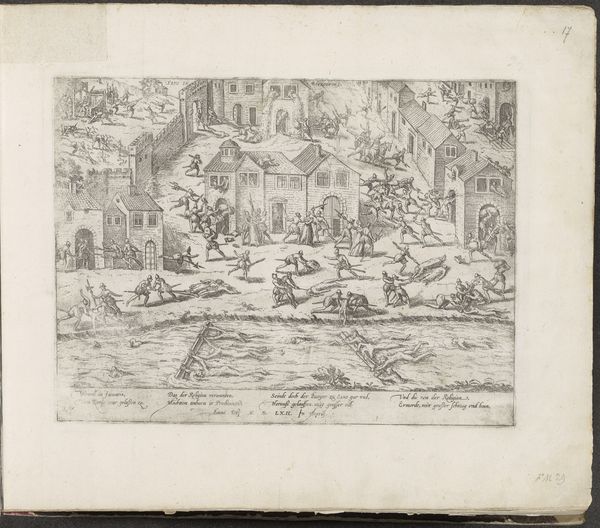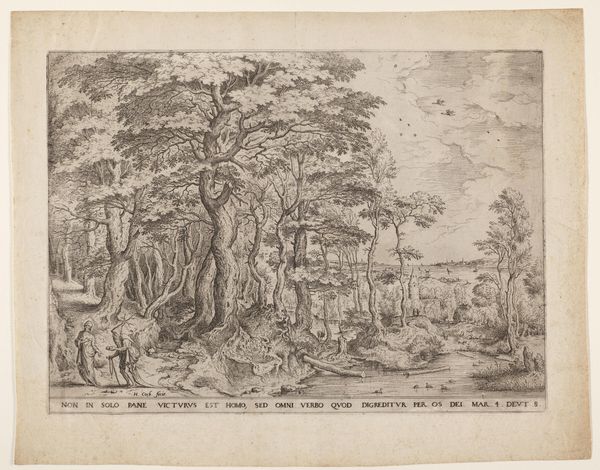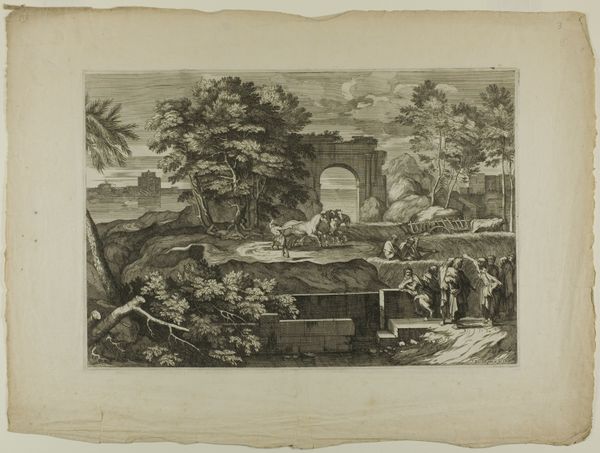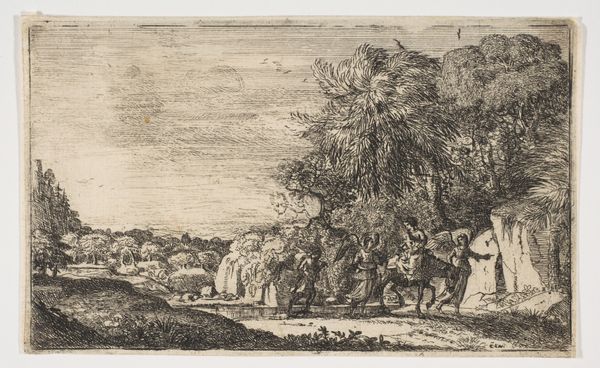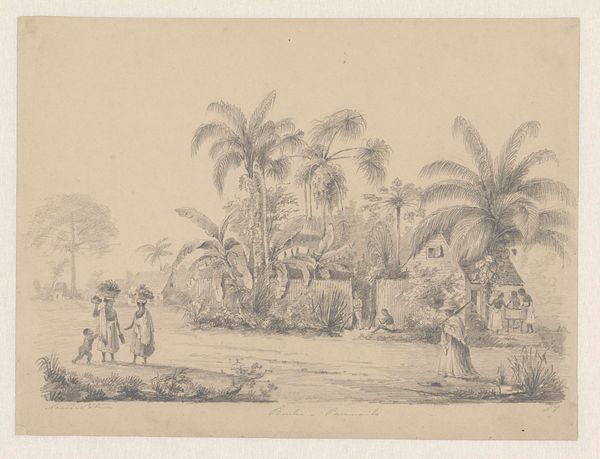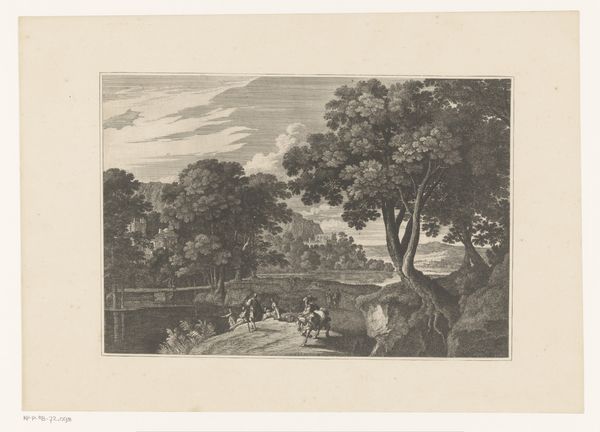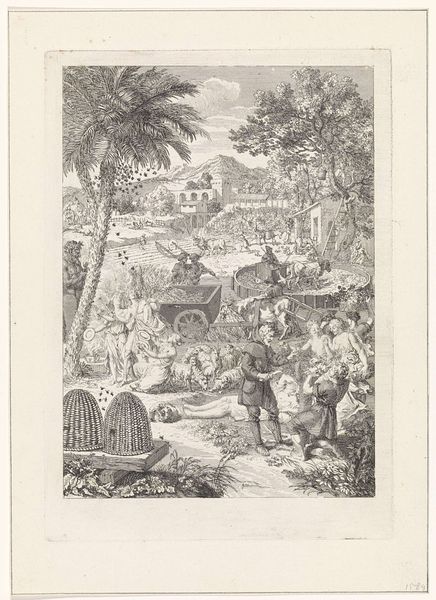
Vice-admiraal Jacob van Heemskerck ontmoet de koning van Ternate, 1599 1600s - 1610s
0:00
0:00
drawing, print, engraving
#
drawing
#
medieval
#
dutch-golden-age
# print
#
pen sketch
#
old engraving style
#
landscape
#
figuration
#
pen work
#
islamic-art
#
genre-painting
#
history-painting
#
engraving
Dimensions: height 145 mm, width 215 mm
Copyright: Rijks Museum: Open Domain
Editor: This print, "Vice-admiraal Jacob van Heemskerck ontmoet de koning van Ternate, 1599," was created by an anonymous artist sometime in the early 1600s. The Dutch Golden Age style shows the meeting between the Dutch Vice Admiral and the King. It seems almost like a staged tableau. What strikes you about this piece? Curator: Well, the very existence of this image speaks volumes about the Dutch colonial project and its visual representation. It’s not just a depiction of a meeting; it's a carefully constructed narrative designed to project power and legitimacy. Notice the way the artist positions the Dutch admiral, presumably Heemskerck, almost at the same height as the King, under what seems like a pavilion or staging. This emphasizes a sense of equal footing, a concept quite dubious in reality. Editor: I see what you mean. The framing really seems to promote that narrative of equality, even though the Dutch were clearly there with ulterior motives. What is the significance of creating these kinds of images at that particular time? Curator: These kinds of images served a very important propaganda purpose back in the Netherlands. They aimed to stir public enthusiasm for the colonial endeavor and attract new investments in the Dutch East India Company. What the artist might be intending to convey is far from being truthful. Editor: That’s fascinating. So, it’s less about an accurate record and more about crafting a specific perception? Curator: Precisely. Think about where this print would have circulated—likely among the Dutch merchant class. Its primary function was to solidify public and financial backing for the VOC’s activities. Images like this also contributed to the construction of "otherness," reinforcing European superiority through visual means. Editor: I hadn't considered that performative aspect of the work as being connected to finance. It’s made me think about art's persuasive function during the age of colonization. Curator: Indeed, the political work of images cannot be overstated when exploring works such as this one. And keep questioning those constructed notions, as these reflections encourage more critical investigations.
Comments
No comments
Be the first to comment and join the conversation on the ultimate creative platform.
